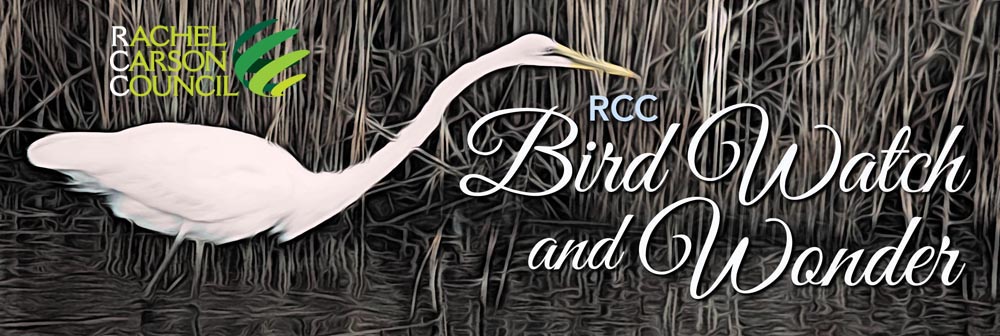 | | | This November issue of RCC Bird Watch and Wonder comes to you at Thanksgiving. That’s why it reflects thankfulness, gratitude, even celebration, that birds connect us to the wonders and beauty of life – even in these dark times for us humans. We protect what we love, so we start off with twelve key ways to protect birds, including a few surprises, along with Ross Feldner’s joyous explanation and celebration of the awe and mystery of bird migration including, of course, more tips on how to help and protect our weary friends on their amazing and often dangerous journeys. 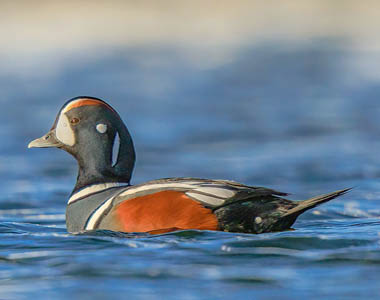 Then join Bryan Pfeiffer and his Chasing Nature blog to admire those hardy seabirds that manage to live happily along the cold and rocky shores of Maine. His stunning photo of the beautifully bedecked Harlequin Duck is just the beginning… Then join Bryan Pfeiffer and his Chasing Nature blog to admire those hardy seabirds that manage to live happily along the cold and rocky shores of Maine. His stunning photo of the beautifully bedecked Harlequin Duck is just the beginning…
Beauty is not what we associate with vultures, but brains and brilliance should be. Rachel Carson often wrote about the importance of observing and loving those species (and people) who are very different from us. Vultures qualify.
Birds and their beauty have fascinated us and been central to human art from prehistoric times as you’ll see in our section on “Bird Art.” But as it turns out, birds are even accomplished artists themselves. Take a look at the work of Ferrisburgh, the American Kestrel at the Vermont Institute of Natural Science where his paintings are on display. Our lead book review for November features Stephen Moss’s Ten Birds That Changed the World. It explores the interaction between human culture and birds from Darwin’s finches to none other than the American Wild Turkey. So this Thanksgiving join us in celebrating and protecting those astounding feathered creatures that we love. Then, as the holiday season unfolds, look in our “Events” section to sign up for the annual Christmas Bird count. It’s an important way we can keep track of what is happening to the birds. Then we can take action to protect them. | | | | | | | | 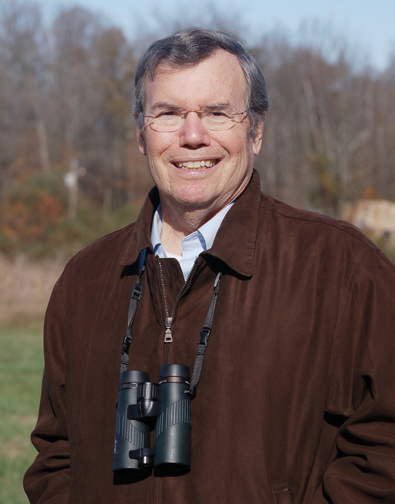 Bob Musil is the President & CEO of the Rachel Carson Council and author of Rachel Carson and Her Sisters: Extraordinary Women Who Have Shaped America’s Environment (Rutgers, 2016) and Washington in Spring: A Nature Journal for a Changing Capital (Bartleby, 2016). He is also the editor of the forthcoming annotated edition from Rutgers University Press of Rachel Carson’s Under the Sea-Wind with his Introduction, updated marine science, and historic and contemporary illustrations and photographs. Bob Musil is the President & CEO of the Rachel Carson Council and author of Rachel Carson and Her Sisters: Extraordinary Women Who Have Shaped America’s Environment (Rutgers, 2016) and Washington in Spring: A Nature Journal for a Changing Capital (Bartleby, 2016). He is also the editor of the forthcoming annotated edition from Rutgers University Press of Rachel Carson’s Under the Sea-Wind with his Introduction, updated marine science, and historic and contemporary illustrations and photographs. | | | | | | 25 Simple and Amazing Ways to Conserve and Protect Birds From Today Birds suffer from the loss of habitats and other factors that affect their migration and reproduction patterns, leading to a decline in their numbers and even driving some to extinction. In order to protect and reduce the death of birds, there are various actions people can take to conserve birds and to at least give them a chance to survive. The most appropriate and necessary actions can solve this problem on two fronts. Foremost is protecting the birds and their numbers, and second is protecting their habitats. | | | | | | | | The Awe and Mystery of Bird Migration Bird Migration is One of Nature’s Most Amazing Phenomena! Approximately half of the world’s nearly 10,000 known bird species migrate. Many birds travel every year from the Northern Hemisphere to the Southern Hemisphere and back in search of food and breeding grounds. But how do seasonal migrants—and other birds, such as seabirds that make long ocean feeding journeys—navigate this amazing journey? | | | | | | | | A Falcon Lost His Ability to Fly. Now the Bird is an Artist in Vermont. ‘He’s a little bird who think he’s a human,’ said Mal Muratori, who works at the Vermont Institute of Natural Science If someone said “falcon,” the next word to come to mind probably wouldn’t be “artist.” But Ferrisburgh, an American kestrel with an injured wing, is headlining art classes in Vermont and drawing crowds with his talented talons. | | | | | | | | The Virtues of Seabirds and Tides How I reserved and then spent one extra hour on Sunday ALONE AT DAWN on the coast of Maine on Sunday, the day many of us gained an extra hour on the clock, I might have easily spent every minute of mine with Harlequin Ducks. Beyond their ornamental getup and luscious colors, Harlequin Ducks are nothing if not theatrical. They bob and dive and frolic like kids playing in the surf. No wonder this duck’s scientific name is Histrionicus histrionicus. | | | | | | | | Flaco the Owl, Zoo Escapee, Leaves Central Park for the East Village Nine months after settling into a new life in the park, Flaco turned up about five miles away on a tree branch in a sculpture garden. Flaco the Eurasian eagle-owl, whose February escape from the Central Park Zoo captured the public’s attention in New York and beyond, turned up in Manhattan’s East Village on Monday, about five miles from the wooded park area he had settled into since flying free. | | | | | | | | | | Why Vultures Might Just Be the Smartest Birds Above the Block The birds are widely reviled for their carrion-eating ways. But an evolutionary history of scavenging has forged a creative, cunning and wide-ranging mind. The two lappet-faced vultures had been together for just a few months, yet the massive birds, with their watchful, featherless gargoyle faces and their dark mottled body plumage so plush it looks like fur, had already mastered the avian version of monkey-see-monkey-do. | | | | | | | | 9 Days, 527 Birds, 55 Species On a map of the United States, you can barely see the skinny strip of land that is Fort Morgan, Ala. But the narrow peninsula — about 20 miles long and, in some places, less than a half-mile wide — is immensely important for migratory birds: It is the last land stop before they fly south across the Gulf of Mexico. Recently, the Banding Coalition of the Americas spent nine days in the dense vegetation of Fort Morgan, carefully capturing birds in mist nets, fitting them with tiny leg bands and releasing them back into the world to make their long journey across the water. | | | | | | | | The Snowy Owls Are Coming For Us Will you be ready? Arctic Foxes will never leave their frozen tundra and saunter into Amsterdam or London. In no way will Snow Leopards stalk prey in the streets of Moscow or Delhi. And Polar Bears won’t be hunting around Boston or Seattle anytime soon. But the Snowy Owls are coming. They’re coming for us — by which I mean for our benefit, especially those of us in Canada and the United States, where the white owls are just now beginning to show themselves. | | | | | | | | The Art of the Bird The History of Ornithological Art through Forty Artists The human history of depicting birds dates to as many as 40,000 years ago, when Paleolithic artists took to cave walls to capture winged and other beasts. But the art form has reached its peak in the last four hundred years. In The Art of the Bird, devout birder and ornithologist Roger J. Lederer celebrates this heyday of avian illustration in forty artists’ profiles. | | | | | | | | 20 Beautiful Birds of America? Which are the most beautiful birds? I started to make a list of ten but quickly that led to 20. Even with 20 picks this was difficult. There are so many dazzling, splendid birds to choose from. But a picture is worth a thousand words so enjoy these! Click on any photo to see it big and beautiful. Here are my picks in no particular order. Do you have a favorite? Let me know yours? | | | | | | | | | | | | Bobolink The Bobolink is a small New World blackbird and the sole member of its genus. They are also known as the "rice bird" because of their proclivity to graze on farmed grains during the winter and migration. Bobolinks breed in the summer in the United States and Canada, and winter in southern South America. Migration is an impressive 12,500 miles! They sing a cheery, bubbly song and are related to blackbirds. Usually polygynous with clutches of eggs laid by a single female with multiple fathers. | | | | | | | | Momentary Meditations are published every Monday to awaken what Rachel Carson called “the sense of wonder” and what Albert Schweitzer called “a reverence for life.” Looking deeply into our interdependence with all life on earth helps us know what we must do. In our harried world, these meditations are meant to serve as a renewable resource for compassion and love. Intentional Invisibility Life’s creativity flows from intentional invisibility. | | | | | | | | Ten Birds That Changed the World By Stephen Moss 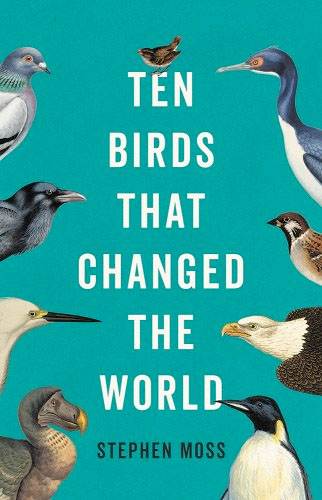 Stephen Moss is one of Britain's leading nature writers, broadcasters, and environmentalists. Author of over forty books and guides, he is an award-winning wildlife television producer for the BBC Natural History Unit. He lives in Somerset, England. Stephen Moss is one of Britain's leading nature writers, broadcasters, and environmentalists. Author of over forty books and guides, he is an award-winning wildlife television producer for the BBC Natural History Unit. He lives in Somerset, England.
The natural history of humankind, told through our long relationship with birds.
For the whole of human history, we have lived alongside birds. We have hunted and domesticated them for food; venerated them in our mythologies, religions, and rituals; exploited them for their natural resources; and been inspired by them for our music, art, and poetry.
In Ten Birds That Changed the World, naturalist and author Stephen Moss tells the gripping story of this long and intimate relationship through key species from all seven of the world's continents. From Odin's faithful raven companions to Darwin's finches, and from the wild turkey of the Americas to the emperor penguin as potent symbol of the climate crisis, this is a fascinating, eye-opening, and endlessly engaging work of natural history. Read more and purchase | | | | | | | | Dancing with the Birds 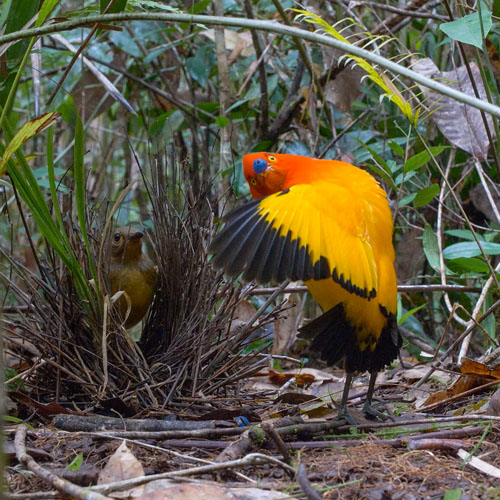 From ruffling their majestic feathers to nailing im-peck-able courtship routines, birds in paradise flaunt their best moves in hopes of landing a mate. From ruffling their majestic feathers to nailing im-peck-able courtship routines, birds in paradise flaunt their best moves in hopes of landing a mate.
In Netflix's ‘Dancing with the Birds,’ We See the Other Side of Bizarre Avian Spectacle.
The new documentary showcases males' obsessive preparations and strange performances—and the gazes of female birds watching nearby.
The internet is no stranger to the wacky bird dance. Clips of smiling (and frowning) birds-of-paradise, moonwalking manakins, and other avian wonders abound online. So when I sat down to watch Dancing with the Birds, a new Netflix documentary produced by the team behind Our Planet and narrated by the English actor Stephen Fry, I assumed it would be akin to a circus: a series of performances stitched together without much storytelling or natural history. There are more than enough avian dancers online to fill a 50-minute film. But Dancing with the Birds is more than a best-of compilation. The filmmakers introduce us to individual birds as the male dancers strive to present their best side to females watching nearby. We see not only their successes, but their failures, too, all affectionately narrated by the richly accented Fry. This approach lets us relate to the birds and their strange, idiosyncratic behaviors as they face an existential challenge: In a cacophonous forest with sometimes hundreds of other flashy bird species, how do they find the one—or, for that matter, anyone? Read more Click here to watch | | | | | | The November 2023 issue of Bird Watch and Wonder was produced by Ross Feldner | | | | | |  The Rachel Carson Council Depends on Tax-deductible Gifts From Concerned Individuals Like You. Please Help If You can. The Rachel Carson Council Depends on Tax-deductible Gifts From Concerned Individuals Like You. Please Help If You can. | | | |  Sign Up Here to Receive the RCC E-News and Other RCC Newsletters, Information and Alerts. Sign Up Here to Receive the RCC E-News and Other RCC Newsletters, Information and Alerts. | | | | | | | | | | | |